Geekflare is supported by our audience. We may earn affiliate commissions from buying links on this site.
A headless CMS system can take your content game to the next level with its impressive capabilities than traditional systems.
The problem with traditional CMSes is that they offer a lot of restrictions for designing and performance. These solutions include frontend and backend aspects into one place that increases difficulties to make changes and reuse content.
But publishing valuable content consistently is needed if you want to increase your presence. It will help you reach more people, convert them into customers, and grow your business more.
Headless CMS can help you meet this demand with more flexibility, performance, and scalability. This is why this technology is trending, and businesses are now switching to it.
According to a report, the global headless CMS market reached US$ 328.5 million in 2019. This is expected to reach US$ 1,628.6 million by 2027.
Now, you can find many service providers offering headless CMS solutions, including both paid and open-source solutions.
So, if you need the best open-source headless CMS solution for your next application, we have listed some of the excellent ones.
Check them out!
But before that, let’s understand what headless CMS solutions are and how using them makes total sense.
What is Headless CMS?

A Headless CMS is essentially a Content Management System (CMS) with only a backend system, a database to store files, and an API for content distribution. It has no frontend system, hence the name “headless”.
But if you are not familiar with CMS, it’s a system or a software solution used to manage content. It allows you to easily create, store, manage, and modify your content. Even if you don’t have any coding or technical expertise, you can build a website and start publishing content straightaway using a good CMS, such as WordPress, Wix, Joomla, etc.
Coming back to the topic, headless CMS systems manage content without a presentation layer or frontend; instead, the content stored in it is distributed via API calls across devices and platforms.
How does Headless CMS work?
Traditional CMS systems use a monolithic architecture where frontend and backend systems of an application or site are connected in a simple fashion. This means it includes both – the site’s presentation layer, i.e., the frontend as well as the backend where the content is stored.
Let’s understand this by taking WordPress as an example. Its frontend is restricted. Although you can tweak some changes through templates, icons, etc., you can’t completely change it. It also limits content operations, design, optimization, and performance.
Headless CMS helps here by removing the “head” or frontend entirely. It purely runs on an app’s backend and attaches the frontend through API. This way, developers have the full flexibility to deliver content anywhere.
It’s named “headless” as in – a body with no head, where:
Frontend = Head
Backend = Body
CMS architecture = Frontend Backend
So, a headless CMS stores your content and uses an API to distribute the content anywhere you want, such as websites, tablets, mobile devices, CRMs, smartwatches, etc. It is actually a more flexible form of CMS that also eliminates the need for hosts; hence, maintenance becomes easier with increased productivity and collaboration.
What are the benefits of Headless CMS for modern businesses?
Separating frontend and backend parts of a system allows you to use the backend just for storing, organizing, and managing content while leaving the frontend part to distribute content for a specific channel. This offers many advantages to the developers and publishers.
Increased flexibility

Unlike traditional CMSs with plenty of limitations, headless CMSs are more flexible. The former puts everything – content, CSS, and HTML in a single place, making it difficult for you to reuse the content.
In contrast, headless CMS offers higher flexibility of design, performance, and distribution by separating the frontend and backend and distributing content through APIs. Your developers can work with multiple frameworks, tools, and technologies of their choice without worrying about content, which will be published independently. You can also design your own frontend however you like and spend time creating more content.
Scalable
You can manage content easily from a point and make changes to your frameworks, tools, and languages without affecting your content. In addition, using the cloud-based architecture will also let you scale up and down easily without any hassles. You can even customize your site without allowing downtime.
Excellent compatibility
Headless CMS systems are compatible across devices, platforms, and technologies of modern times. So, you can easily publish your content anywhere you like with consistent performance. In addition, you can integrate with multiple languages and codebases to make things simpler.
Better security
Since you are separating the frontend and backend, even if one of them is compromised, it won’t affect the other. This offers better security than traditional systems where both parts are combined. In addition, it enables a single point of contact between your technology stack and content through API; hence, the attack surface reduces significantly.
Easier maintenance
Removing the frontend will make it easier for your team during maintenance. This reduces the need for less workforce, time, money, and other resources and improves collaboration between your team since they can share things easily.
Looking at the impressive benefits of headless CMS, it makes sense to transition from traditional CMS and embrace the modern, efficient architecture of headless CMS systems. And if you are looking for it, you will find plenty, each with excellent features. However, many of them are paid for advanced features, which everyone might not require.
So, here are some of the best open-source headless CMS systems that you can check out.
Strapi
Get the leading open-source headless CMS for your next applications by Strapi. It is customizable, developer-first, and 100% JavaScript that makes building a performant, customizable, and self-hosted content API easy and simple.
Strapi is an open-source platform as its complete codebase is available publically and maintained on GitHub by many contributors. Customizing API as well as admin panel is easy, and you can extend the content management in seconds with custom plugins. You can also use the API from various clients, such as Vue, Angular, React, IoT devices, or mobile applications by using GraphQL or RESTful.

Maintain your data privacy with self-hosted content and take control of all the data and costs. The solution will also help you build a flexible data structure within minutes with robust features tailor-made for your benefit.
Define different models easily and add relations to design a rich layout for the content you need. You can write, edit, and manage the content types seamlessly with Strapi. Additionally, you can integrate any services via third-party vendors and keep building apps and connecting with the framework.
Deploy Strapi on any traditional hosting servers, such as Render, AWS, Azure, Heroku, 21YunBox, and more. It gives you the flexibility of choosing the hosting platforms for your websites.
Enjoy the free service with limited features. Get more benefits with the paid plan starting at $9/admin/month.
Apostrophe
Get a flexible and robust open-source website builder – Apostrophe – suitable for SaaS companies, enterprises, higher education, digital agencies, and a lot more. It can enhance your digital experiences from the same dashboard and lets you customize a no-code website factory through a modern tech stack.
Apostrophe empowers editors with a drag-and-drop editor to make changes in real-time. You will also find easy-to-use visual design tools that allow dynamic styling without disturbing brand guidelines. Hence, your market speed will increase by 10x.
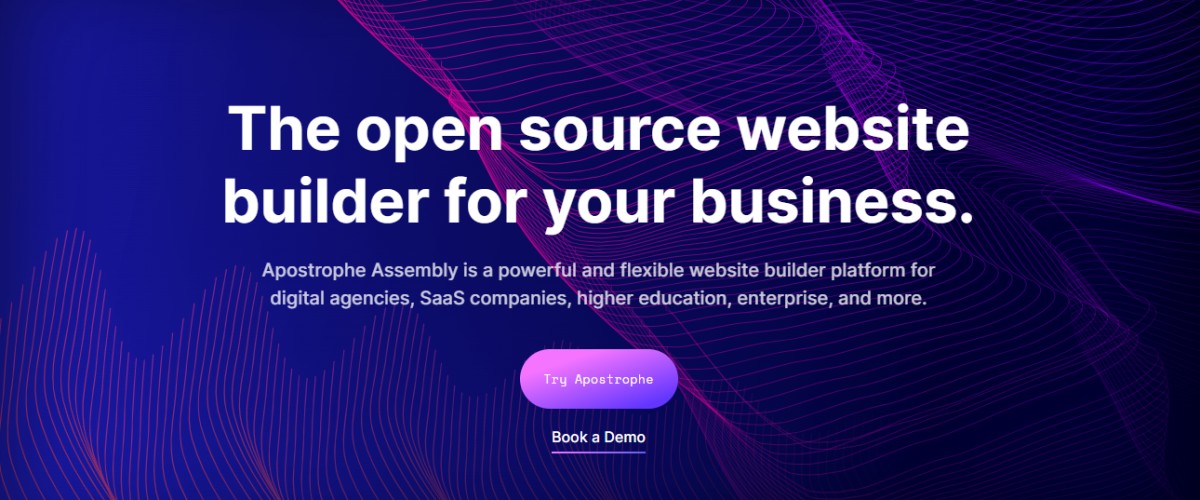
Integrate your technology, including Express, MongoDB, npm, Vue.js, and Node.js, with flexible and native modules content APIs. In addition, Apostrophe provides a single dashboard for every operation so that you will never lack in searching for the perfect tool for your websites. You can also integrate with Jamstack to create robust custom solutions.
Get a modular and extensible system that supports custom plugins and avail of the best-in-class plans and packages that support your goals. Book a demo and see how headless CMS can change your way of building websites.
Webiny
Webiny serverless CMS provides a flexible, scalable, and agile solution for your content needs. Since different businesses have different requirements, it offers valuable tools to use independently across your organization, from your development team to the marketing team.
Webiny’s headless CMS is based on GraphQL with powerful modeling features. It offers powerful GraphQL and fine-grain permission control to build landing pages in minutes. You can manage content in various languages and multiple websites with built-in multi-tenancy.
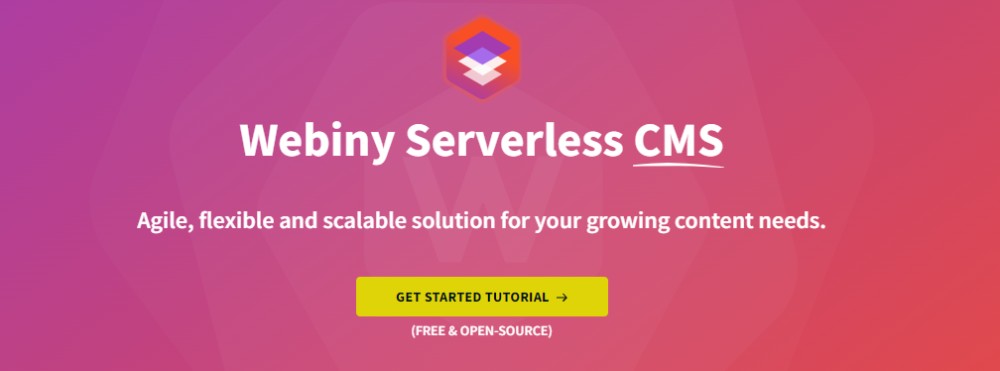
Webiny application framework gives everything you want to build, architect, and deploy serverless applications along with an omnichannel content hub. It also provides filter operations and query search for fast performance. You can even make changes to any content at any time through the powerful API.
Webiny API allows you to create or modify any content models programmatically and get complete access control over your operations. It is scalable, adaptable, secure, gives data ownership, permission control, lower cost of ownership, and more.
Create full-stack serverless web for free with serverless CMS, application framework, and community support. Allow Webiny to provide custom pricing according to your business needs.
Directus
Experience the best Open Data Platform for turning SQL databases instantly into beautiful no-code applications and APIs with Directus. It powers your project with modern solutions and is specially designed for developers.
The modular codebase is completely JavaScript. Directus uses the power of Vue.js 3 and Node.js for ultra-fast performance and simple extensibility. You will also have the entire control over your existing or new database without migrating to any proprietary data model.
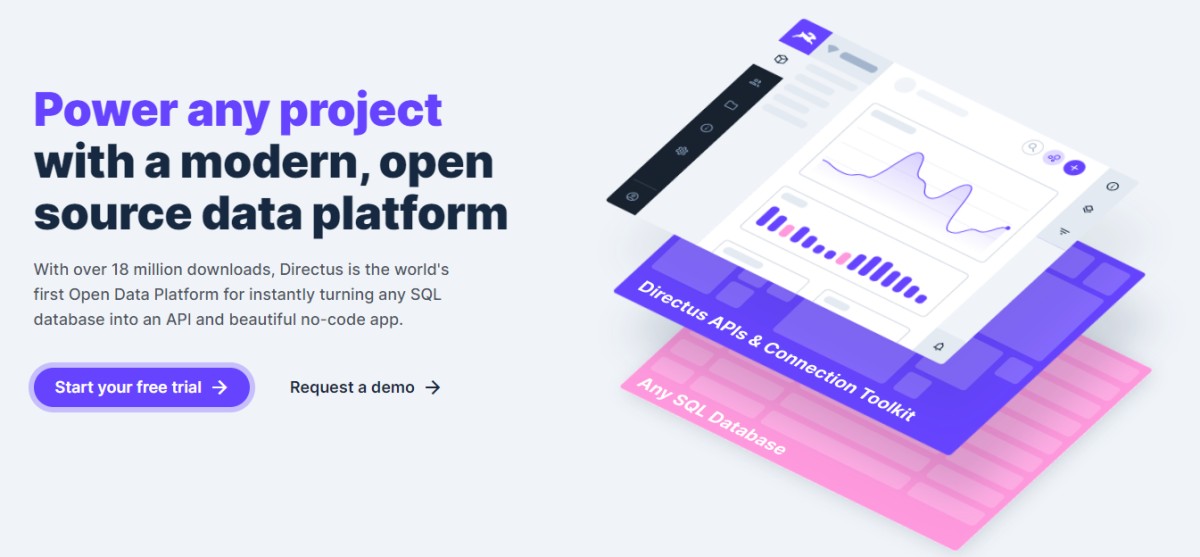
You can manage content for every application, kiosks, digital signage, website, and other digital experience. Directus is a flexible platform that provides endless solutions, from software-as-a-service to data management and analytics.
Furthermore, it provides a dynamic GraphQL and REST API through introspection based on your database schema. Start creating a project in its self-service cloud dashboard and learn in deep. Power your projects with Directus at $25/month and impeccable benefits.
Squidex
Squidex allows you to manage your content in a modern way without requiring any other system for your content. It offers a single place with structured, centralized, and seamless integrations to other systems.
Every change you make in a website or application is handled through a versioning system that lets you compare various versions of the content. You can also roll back to the previous one at any time. Additionally, seamless integration with other systems allows your content to react when changes are made. You can also post your blog to Medium and create tweets.
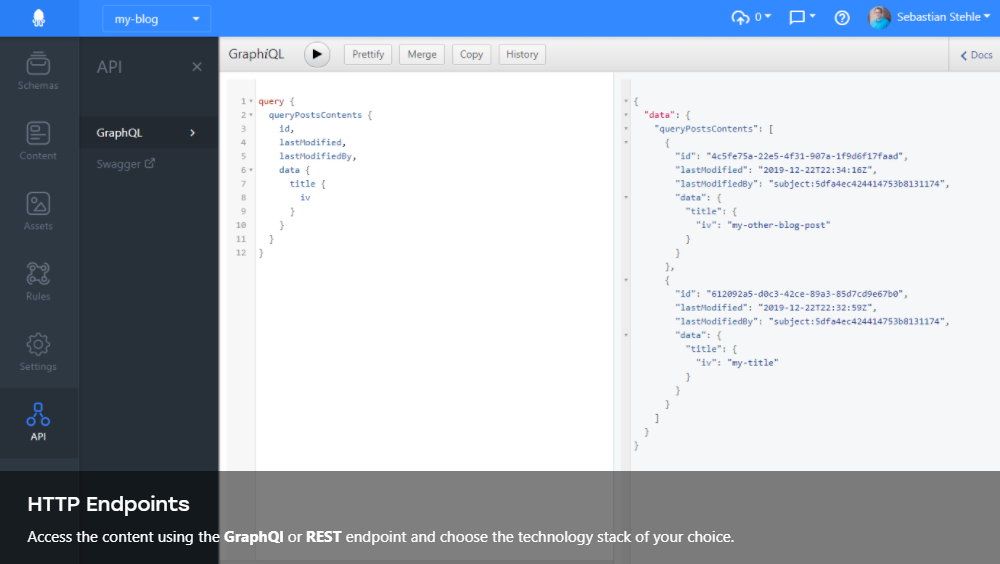
Squidex makes your path simple by eliminating complicated rules to review or publish content. You can implement your rules with Squidex’s compelling workflow system. It is open-source software, made especially for developers with a best-in-class codebase. In addition, Squidex is easy to extend, secure, accessible, and easy to maintain, making it desirable for high-standard enterprises.
Signup for free and start creating projects today.
Ghost
Start your headless CMS journey with Ghost and learn how to build independent, beautiful publications. Follow its setup guide from the local environment to product development and install the software easily. It supports the Ubuntu server for running self-hosted instances.
You can design templates of your own using the same guide. By understanding Ghost’s configuration and architecture, you will never lack in building new websites, applications, etc. With the open-source theme starter framework, you can take a faster track of developing custom themes.

The REST API allows content in and out programmatically with ease and lets you integrate the API with the various third-party custom static or frontend frameworks. You can also connect with communities, such as GitHub, StackOverflow, Reddit, Developer forum, and Twitter to gain and share knowledge.
Build your creative business with a 14-day trial option and dig deeper for the benefits.
Netlify CMS
Start making flexible and faster web projects by using Netlify CMS along with the static site generator. It helps you manage your content for Git workflow, and using a static site will offer scalability, security, and speed through an easy-to-use editing interface for your content.
Netlify CMS stores your content in the Git repository for easier and simpler versioning. It also helps in multi-channel publishing and handling content updates inside Git. It is designed as a one-page React application; thus, you can create UI widgets, editor plugins, custom-styled previews, and add backends to support various Git platform APIs.
Choose a pre-configured template with a static site generator and deploy within minutes in a single click to the global CDN. You can also implement modern tools to deliver safer, more scalable, and faster sites.
In addition, your editors will get an intuitive workflow and UI that meets content management requirements. It also includes real-time previewing, drag-drop media uploads, and rich text-editing options.
Sanity Studio
Get free form customization and rapid configuration with Sanity Studio, an open-source CMS built with React.js. Its plugins and tool kits help you create your own workflows the way you want and start managing your content.
This single-page application can help you install plugins or build them independently. You can also describe content validations, UI structures, content models in JavaScript to see directly in the next window.
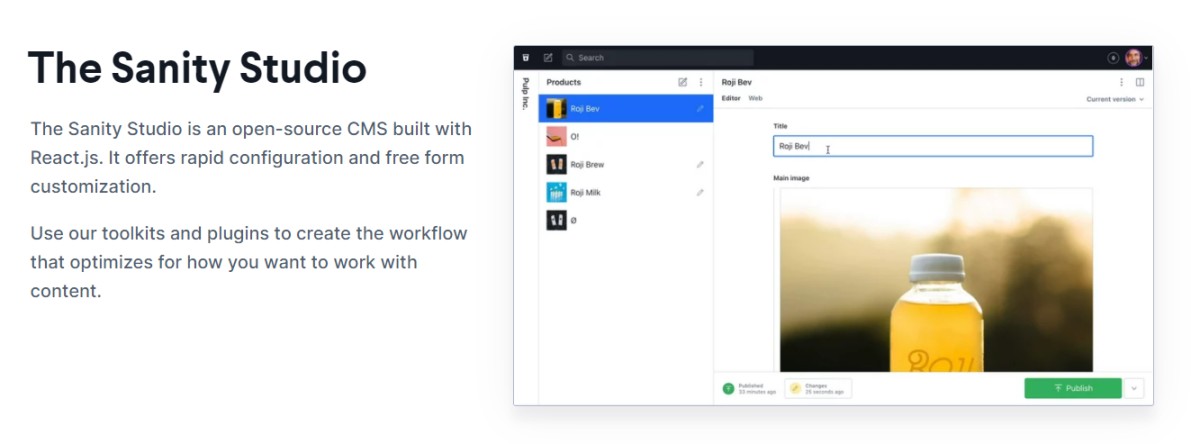
Experience the freedom of reorganizing navigation or rendering analytics data next to the editing. Do not miss your editing comforts while working on reusable content. Instead, you can expect session-level document rollback, modern features, and real-time collaboration from Sanity Studio.
You will get benefits, like document revisioning, building type previews, working on the phone or other touch devices, uploading images directly from the clipboard, pasting formatted text from work, web, or Google Docs, and more. Moreover, use plain JavaScript objects and quickly configure the user interfaces and content schemas. You can also install UIs for data models and enhance your workflows.
Get it started for free or pay $99/project/month and start building websites and applications.
Plone
Plone is the ultimate open-source enterprise CMS that provides plenty of features, including responsive theming, multilingual built-in, and various web content types.
Plone has stunning customizability and functionality out of the box. It is unique among other headless CMS in terms of industrial security, strength, granular permissions, accessibility, scalability, flexibility, and documentation.
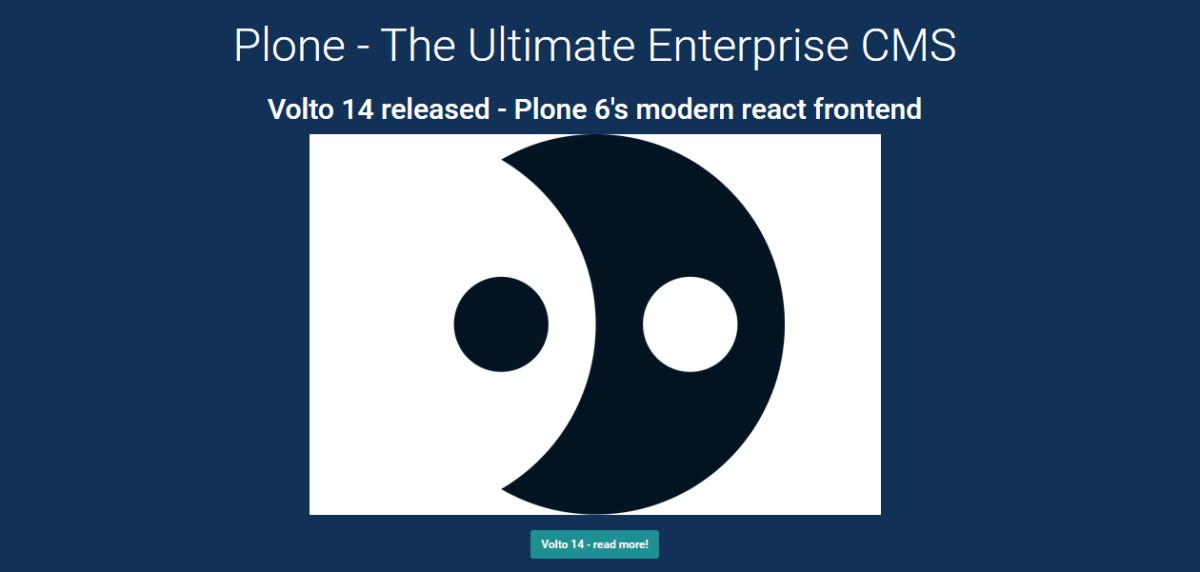
Plone combines advanced features and security with powerful and easy-to-use frontend web technologies. It comes with Dexterity content types and Diazo theming along with Python 3. In addition, it offers REST API that works as a headless CMS and powers various JavaScript frontends.
Furthermore, you can access different websites based on Plone to experience its uses, integrations, and a lot more. It provides self-guided learning resources so that you can learn fast. And you can also join the community for discussions and communications.
Flextype
Get Flextype to experience the flexibility, speed, and productivity to build content and manage them effectively. Due to its built-in smart cache and elegant architecture, it is known as the ultra-fast content management system.
While building CMS, Flextype focuses on simplicity and flexibility to produce a simple yet powerful API. Its stunning control panel allows you to use any content editor to write your content. In addition, you will get complete programmatic control over the CMS with its REST API and compact JSON payloads.
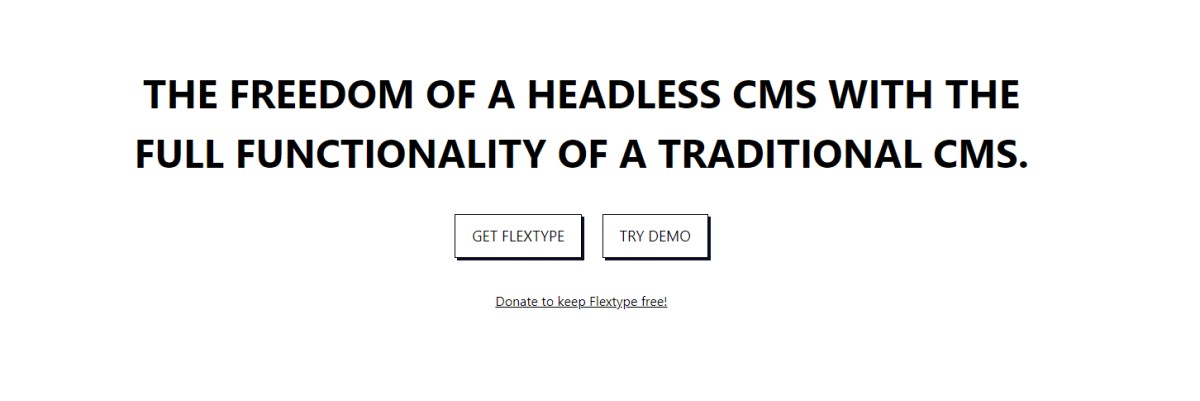
Flextype offers flat-file nature to define unlimited fields or dynamic content. In addition, you can control the versions via Git or another version control system. Flextype is suitable for various projects, such as native applications, websites, kiosks, game data, SaaS platforms, wearables, e-commerce, and more.
Get the open-source platform now and grow your business.
Keystone
Build faster and scalable content with the Keystone Headless CMS platform. Just describe your schema and get awesome Management UI and robust GraphQL API for data and content.
Ship the code with elegant APIs without compromising the flexibility of a bespoke backend. It offers multiple field types, session management, custom schema, access control, database migrations, powerful filters, relational data, event hooks, automated CRUD, and more.

Keystone’s admin UI is intuitive and flexible to understand your needs and shape your content accordingly. Additionally, it offers next-generation rich text WYSIWYG BYO custom React. You can deploy it on Heroku, Render, Digital Ocean, etc., or your custom infrastructure. Keystone can fit your git-based building workflow and offer automation and CI tooling.
Build dynamic applications, status sites, mobile and web applications, and commerce solutions efficiently with Keystone. Empower your team with this tool and grow your business. Start building today with 5-minute starters, zero lock-ins, and an example project for free.
Conclusion
Headless CMS systems offer a modern and efficient approach to creating and distributing content across multiple channels with high performance, flexibility, scalability, and a bunch of useful features.
Thus, if you are looking for an open-source headless CMS system, check out the above options based on your needs. If you are looking for commercial options as well, you can check out the list of Headless CMS.



